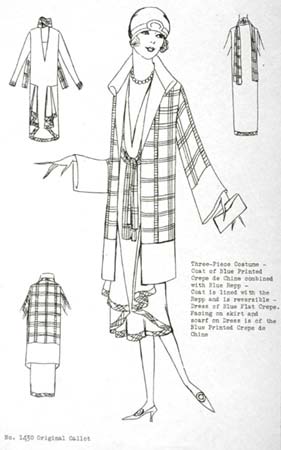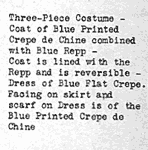

|
By the 1920s, however, the prevailing silhouette had become less
fitted and less intricately cut and decorated. Manufacturers of
mass-produced women's clothing that was "ready to wear" had previously
confined their efforts largely to separate skirts and blouses, cloaks,
underclothes, and nightwear: garments that were easily altered to
size or were somewhat loose-fitting. |
|
Maginnis & Thomas |
 The
tubular silhouette of the 1920s lent itself to simple shapes, allowing
manufacturers to produce high quality, fashionable "ready-to-wear"
dresses out of elaborately patterned textiles.
The
tubular silhouette of the 1920s lent itself to simple shapes, allowing
manufacturers to produce high quality, fashionable "ready-to-wear"
dresses out of elaborately patterned textiles.